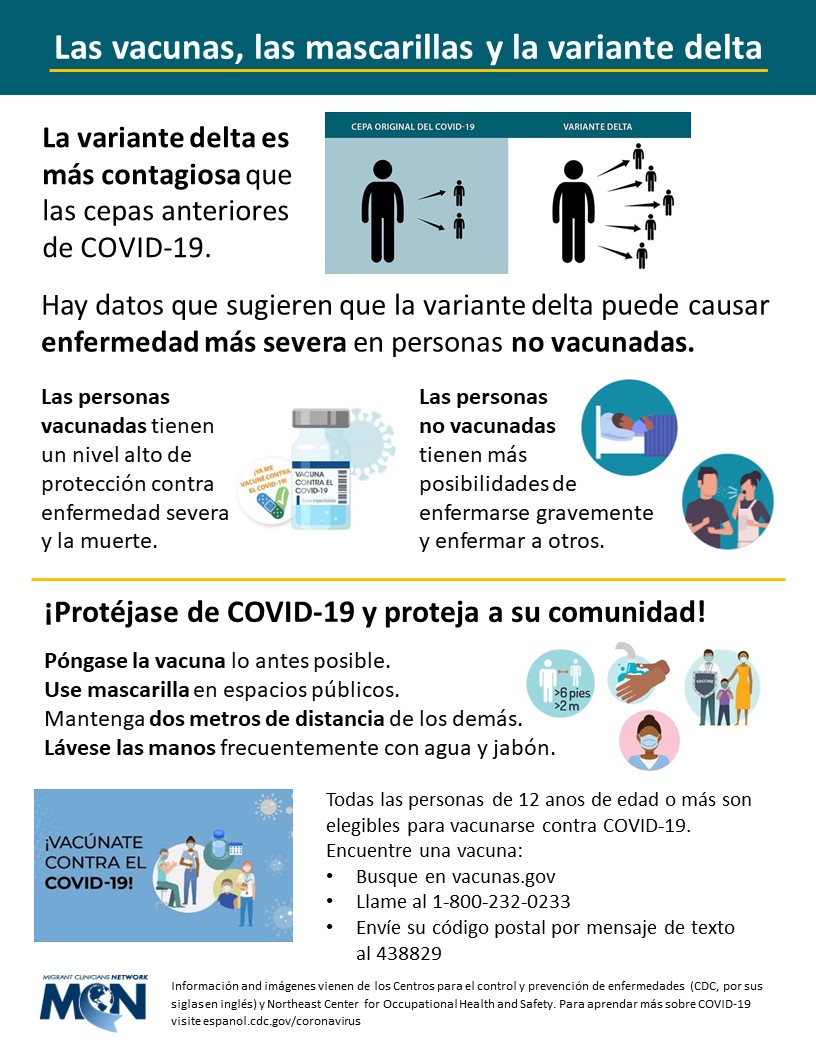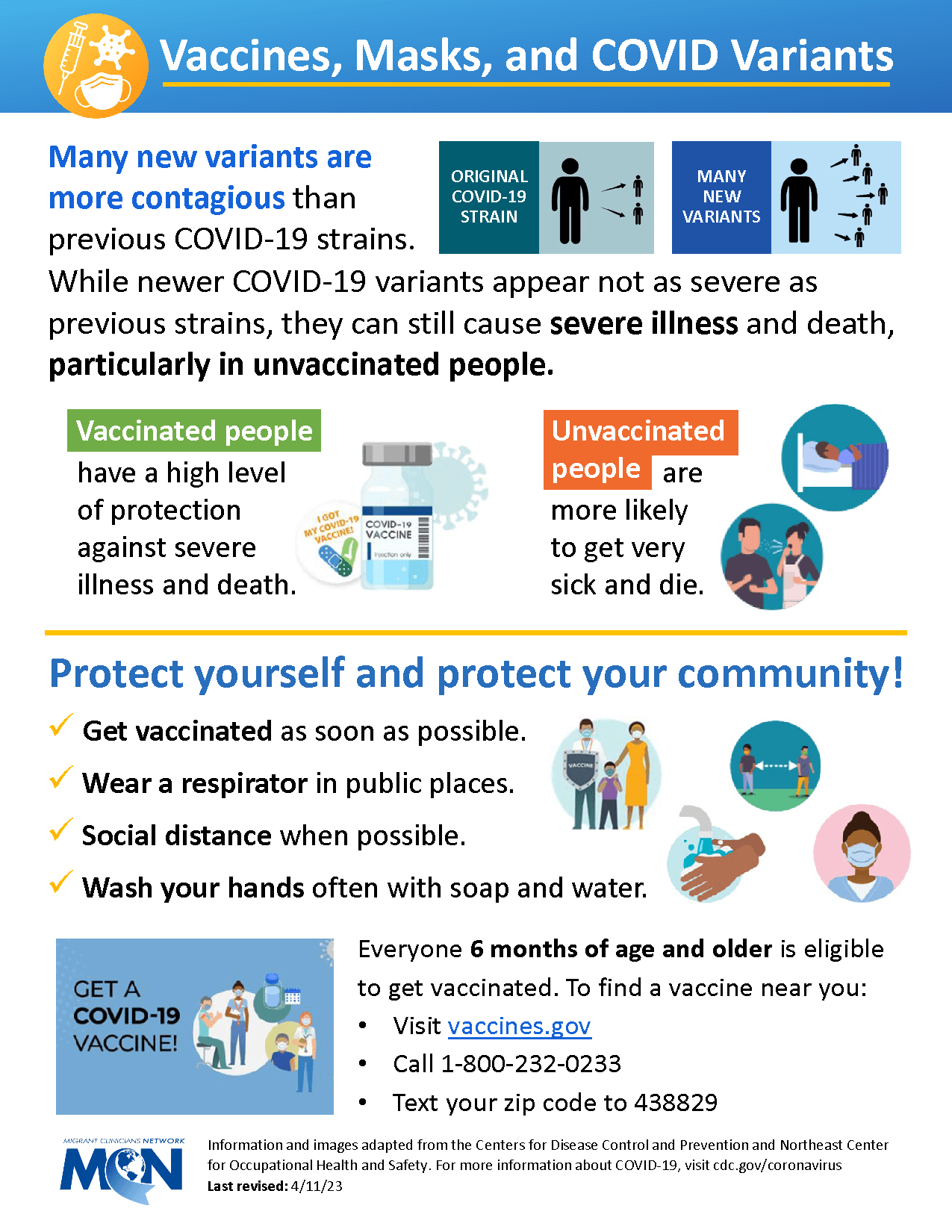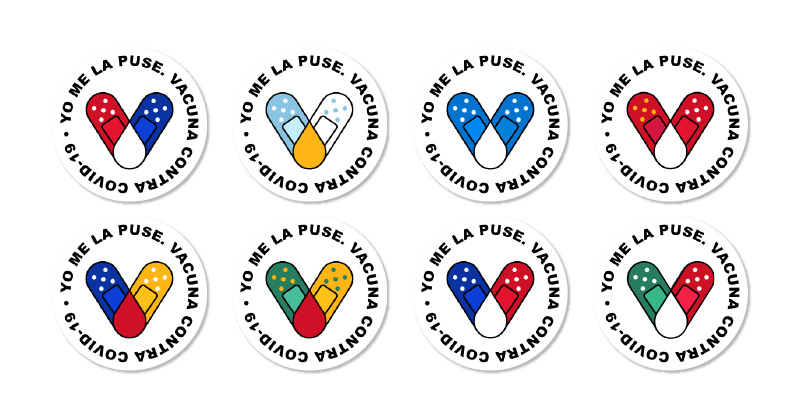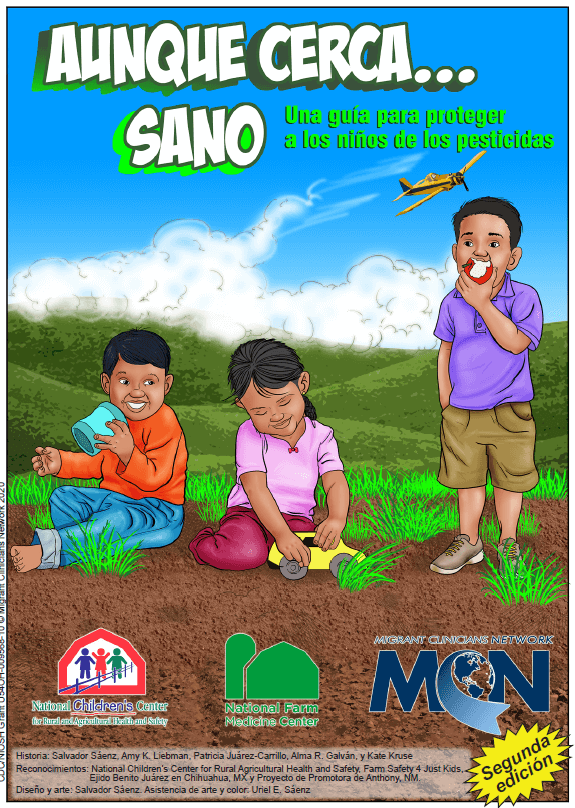

Download Resource
This resource provides information confirming the safety and effectiveness of the COVID-19 vaccine. It also includes recommendations for receiving the vaccine and COVID-19 prevention. This resource is available in pre-made and template format, and in three languages including English, Spanish, and Haitian Creole.
Download Resource
- 2024-08-05_General-COVID-Vaccine-Trifold_Handout_Template1.pdf (450.47 KB)
- 2024-08-05_General-COVID-Vaccine-Trifold_Handout_Template1.pptx (5.03 MB)
- 2024-08-05_General-COVID-Vacuna-Tríptico_Material-de-apoyo_Plantilla1.pdf (446.88 KB)
- 2024-08-05_General-COVID-Vacuna-Tríptico_Material-de-apoyo_Plantilla1.pptx (5.02 MB)
- 2024-08-05_Modèl_depliyan_sou-vaksen-COVID-Jeneral.pdf (413.37 KB)
- 2024-08-05_Modèl_depliyan_sou-vaksen-COVID-Jeneral.pptx (4.92 MB)

These resources feature printable stickers designed to promote vaccination. They can be printed or used as images on social media to reach audiences from different countries while encouraging vaccination. The flags-colored V-mark stickers represent the U.S., Haiti, and different countries in Latin America.
Download Resource
- Bolivia_Flag-Sticker.png (45.21 KB)
- Colombia_Ecuador_Venezuela_Flag-Sticker.png (44.35 KB)
- Dominican_Panama_Cuba_Chile_Paraguay_Flag-Sticker.png (44.98 KB)
- Guatemala_Argentina_Urguay_Flag-Sticker.png (44.68 KB)
- Honduras_ElSalvador_Nicaragua_Flag-Sticker.png (44.59 KB)
- Mexico_Flag-Sticker_ver_1.png (137.74 KB)
- UnitedStates_Flag-Sticker.png (44.9 KB)
- Haiti_CostaRica.png (100.52 KB)
- SPA_Spanish_Sticker_Template_08-26-21.pptx (1.87 MB)
- ENG_Sticker_HaitianCreole_template_7_22_2021.pptx (490.23 KB)
- 2021-8-25_V-Mark-Flag_Sticker_Template.pptx (1.86 MB)
These image-centric and engaging resources can help clinicians reach refugee, immigrant, and migrant communities with important information regarding getting vaccinated. The flyers are available in English, Spanish, and Haitian Creole, and both pre-made and editable versions are available. Users can insert their organization logo as well as state-specific information such as their state vaccine sign-up website and vaccine customer service phone number. Along with these fliers, MCN has created a simple ‘how-to’ video (see above) for editing the fliers.
The original designs for this resource were created by a staff member of East Coast Migrant Head Start Project who is the daughter of a farmworker, and who had once gone to East Coast Migrant Head Start Project centers herself. The flyers were adapted by MCN.
Download Resource
- 9-26-23_What-To-Expect-COVID19-Vaccine_English-Handout.pdf (288.57 KB)
- 9-26-23_Que-saber-sobre-la-vacuna-contra-COVID_flyer_Template.pdf (301.65 KB)
- 9-26-23_Ki-sa-pou-ou-atann-le-w-ap-resevwa-vaksen-COVID19.pdf (291.1 KB)
- 9-26-23_What-To-Expect-COVID19-Vaccine_English-Template.pptx (1.58 MB)
- 9-26-23_Que-saber-sobre-la-vacuna-contra-COVID_flyer.pptx (1.52 MB)
- 9-26-23_Ki-sa-pou-ou-atann-le-w-ap-resevwa-vaksen-COVID19_Template.pptx (1.58 MB)
Show your support of the vaccine in your community! MCN’s #YoMeLaPuse campaign offers five beautifully designed posters showing people of various ages after their vaccination that are available for download and printing. A sixth poster is customizable, allowing communities to paste in a photo of a local religious leader, or community health care providers, or other community leader who is proud to have gotten the vaccine. The posters are accompanied by a short video in Spanish, which can be played at community events and in waiting rooms.

Templates for creating your own posters are available below.
Download Resource
- 21_YMLP-mujer-1_Poster.pdf (1.06 MB)
- 21_YMLP-mujer-2_Poster.pdf (556.35 KB)
- 21_YMLP-mujer-3_Poster.pdf (513.64 KB)
- 21_YMLP-hombre-1_Poster.pdf (1.88 MB)
- 21_YMLP-hombre-2_Poster.pdf (309.49 KB)
- 2021_Yo-me-la-puse_Póster_Plantilla.pptx (1.34 MB)
- 2021_Yo-me-la-puse_Poster_Template.pptx (1.34 MB)
Links
This colorful vaccine calendar comic gives low-literacy information on vaccines and some information on why adults need immunizations, too. Available in high resolution to download and print into poster size.
Download Resource
The New England Journal of Medicine has an article analyzing early cases in China which gives some clarity around how the virus works: “Clinical Characteristics of Coronavirus Disease 2019 in China".
The CDC’s archived webinar from last week provides a useful overview for clinicians: “Coronavirus Disease 2019 (COVID-19) Update—What Clinicians Need to Know to Prepare for COVID-19 in the United States.”
This list of resources compiled by the federal government of Mexico were chosen because the Mexican government is doing a commendable job alerting their health workers to new essential information and providing easy to understand resources. With a limited number of Spanish language resources available in the US, this list fills important gaps.
These infographics and social media cards are simple and bright. The order in which the recommendations are presented is great.
This list of resources was selected because of the breadth of languages and the simplicity of the infographics.
APHA's Get Ready campaign helps Americans prepare themselves, their families and their communities for all disasters and hazards, including pandemic flu, infectious disease, natural disasters and other emergencies.
Links
The Hesperian provides excellent patient education material on COVID-19 in a number of languagues for use internationally or with immigrant communiites in the United Sates.
Resources in English and Spanish from Florida State University's Center for Child Stress and Health on how to talk to a child about deportation and associated stress.
Download Resource
- CCSH_Deportation_EN.pdf (72.55 KB)
- CCSH_Deportation_SP.pdf (70.94 KB)

This pesticide comic book targets migrant and seasonal farmworker families to educate parents about children's risks to pesticide exposure and ways to minimize these risks. The latest edition is currently only available Spanish though we are working on releasing an updated version of the comic in English.
We are currently "sold out" of our printed pesticide comic book. We are looking for additional funding. In the meantime, please download an e-copy.
Download Resource
- PesticidesNearbyButHealthyENG_2007_0.pdf (1.33 MB)
- AUNQUE-CERCA-SANO-2020_PRINT.pdf (21.69 MB)